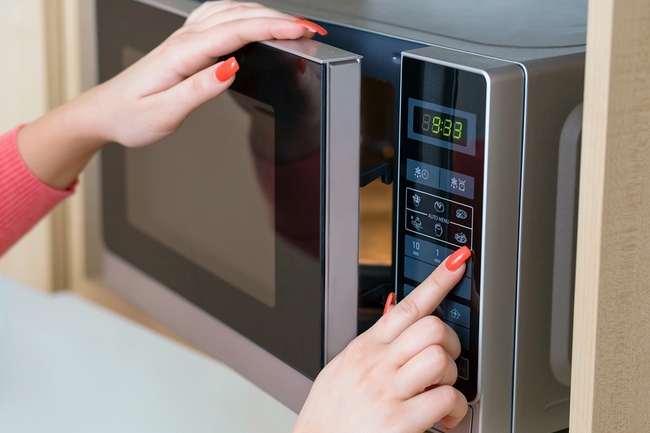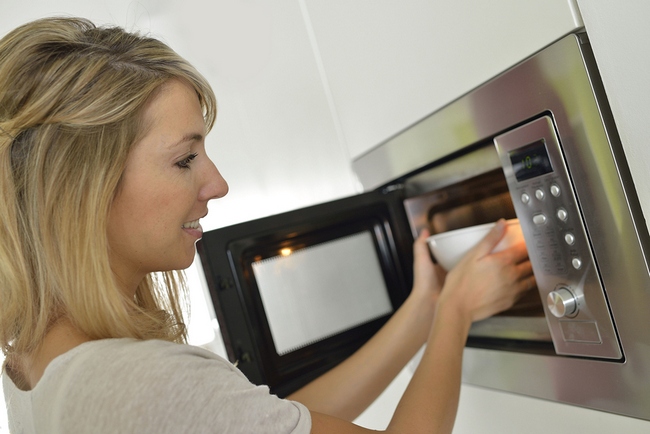- Make It Yourself Lavender Heart-Shaped Bath Bombs!
- 20 Things You Never Knew About “Down There”
- 12 Best Foods For Those Suffering From Arthritis Pain
- 12 Personal Hygiene Mistakes Almost Everyone Makes (Mom Never Told You About #4!)
- 15 Medicinal Plants And Herbs From The Cherokee People
- 12 Mind-Blowing Benefits Of Drinking Coconut Water During Pregnancy
- 12 Outstanding Winter Foods That Won’t Fatten You Up Like A Christmas Turkey
Why Were The Soviets Scared Of Microwave Ovens?

Photo credit: bigstock
Did you know that microwave ovens were once banned throughout the largest country in the world? In the 1970s, scientists in the Soviet Union conducted research on these new appliances and arrived at some worrying conclusions. Their findings led to microwave ovens being banned throughout the Soviet Union for over twenty years while the rest of the world embraced the technology. But why? Did the Russians know something the rest of the world didn’t?
The earliest microwave ovens were developed for use by the United States Navy in World War II. They were enormous and cost tens of thousands of dollars apiece. Over the decades, the technology improved, and in the early 70s the first household microwave ovens became commercially available. In the Western world, these ovens quickly became a hit with consumers who could now heat their meals faster and easier than ever before.
In the Soviet Union however, things were different. Numerous sources claim the ban in the Soviet Union went into effect in 1976 due to concerns that microwave radiation made the food unsafe to eat. The ban was lifted in the 1990s as the now post-Soviet Russian economy began to open up to free trade.
Do microwaves make food unsafe?
It is important to understand that a microwave oven prepares food in a very different way than any traditional cooking method. What all forms of cooking have in common is that they use heat to alter the molecular structure of food, which kills germs and makes it safer to eat. In many cases, it also improves the taste.
When you roast your food over open flames or use a conventional stove or oven, the heat cooks the food by either heating the air around the food, or by transferring heat directly into it via surface to surface contact (using a skillet, for instance).
A microwave oven cooks food in a radically different manner: The oven works by firing beams of microwave radiation into the food. This causes the water molecules inside the food to vibrate at a higher frequency than normal generating heat. This also alters the molecular structure of the food, but in a different way, resulting in food that has been cooked from the inside out. This way of generating thermal energy is called “dialectic heating”.
There are some scientists who claim that using this method for cooking actually alters the molecules of the food in such a way that it destroys much of the food’s nutritional value. The result, so they claim, is a meal that could be heavy on calories, but has been depleted of vitamins, minerals and antioxidants.
One study found that broccoli, which has antioxidants that help fight cancer, is negatively effected by the use of microwave radiation. Researchers found that the antioxidant levels in broccoli cooked in a microwave oven were 97 percent lower than broccoli that had been prepared using other methods. Meat appears to be affected as well; another study found that the protein in beef broke down and became less usable by the body when it was microwaved.
Other scientists and health organizations have dismissed these studies as flawed or just pseudoscience. The FDA (Food and Drug Administration) in the United States insists that microwave ovens are safe to use.
There is also the issue of the container being used for microwave cooking. Plastic containers can be harmful in their own right, as they often contain harmful chemicals like bisphenol-A (BPA). Even if it is labelled “microwave safe”, this merely means that the plastic will not melt in the microwave oven. When it comes into contact with heated food, contamination from the plastic chemicals can still occur.
Continue to Page 2

Photo credit: bigstock
Ambient Radiation Risk
There is also the risk of radiation leaking outward from the oven into the immediate environment. According to the FDA, the maximum permissible amount of radiation an oven can emit is 5 milliwatts per square centimeter, and up to 2 inches away from the surface of the oven. Anything higher than that or emitting further than 2 inches should not be used.
Of course, how would you know? You can’t see or smell radiation. If you choose to use a microwaves, make sure it is not too old and it is in good condition.
So…should I throw out my microwave oven?
Let’s not go that far. Just don’t make it your default option for heating food. It is better to use a conventional oven, stove or grill.
READ ALSO: Studies Find Cell Phones Are Much More Dangerous Than Brain Cancer!
But if you truly don’t have any other option, a microwave is acceptable. Just make sure what you’re actually eating is healthy in the first place. TV dinners are unhealthy no matter how they are prepared.
References:

































smugbill
Dec 17, 2016 at 2:40 pm
you dance around the issue as if your pay check comes from microwave oven manufacturers. please stop deflecting by talking about the food and packaging that goes in it; does it poison food or not?
your use of the fda for support is completely laughable. yours is a health blog. is using a microwave unhealthy of not. if unhealthy, say so. let the fda and its stooges do the dancing. i come here for health information. why won’t you tell me about the health implications of using a microwave?
Ian Brooks
Jun 6, 2018 at 12:54 am
In simple terms, the answer is yes, MW ovens are safe to use.
But that is mitigated by the restriction that you would have to use common sense, something unfortunately missing from a large portion of the population.
Don’t cook in plastic, don’t overheat, leave food to sit before eating, etc.
Ian Brooks
Mar 6, 2018 at 8:46 pm
Your title and first paragraph imply (well, state) that MW ovens were banned in the USSR.. This is NOT true, there is no evidence for this at all and every article that states it can be traced ultimately (via articles by Joseph Mercola or Anthony Wayne & Laurence Newell) to an article by Bill Kopp who does not cite sources or clarify where he got his information from.
The broccoli study cited (F Vallejo, FA Tomás-Barberán, C García-Viguera, “Phenolic compound contents in edible parts of broccoli inflorescences after domestic cooking”, Journal of the Science of Food and Agriculture, 15 October 2003) immersed broccoli in water and microwaved it for over 5 minutes while steaming broccoli for only 3½ minutes. Two of the advantages of microwaving are speed and using less water (so nutrients do not leach out), so 5 minutes of microwaving would be similar to about 10 minutes of boiling or steaming which would doubtless also get rid of the majority of anti-oxidants!
All cooking will break down some molecules – that’s its purpose! Many proteins and enzymes are useless to us unless they can be broken down into polypeptide chains that our body can re-use to create our own human proteins.
The question therefore is “do MWs cause more damage than conventional cooking?” and the answer to that would appear, after 40 years of sales, is no. Using common sense (don’t use plastic containers – which you wouldn’t in a conventional oven anyway, don’t over boil your coffee etc.) then MWing is perfectly safe.
The taste is another matter.